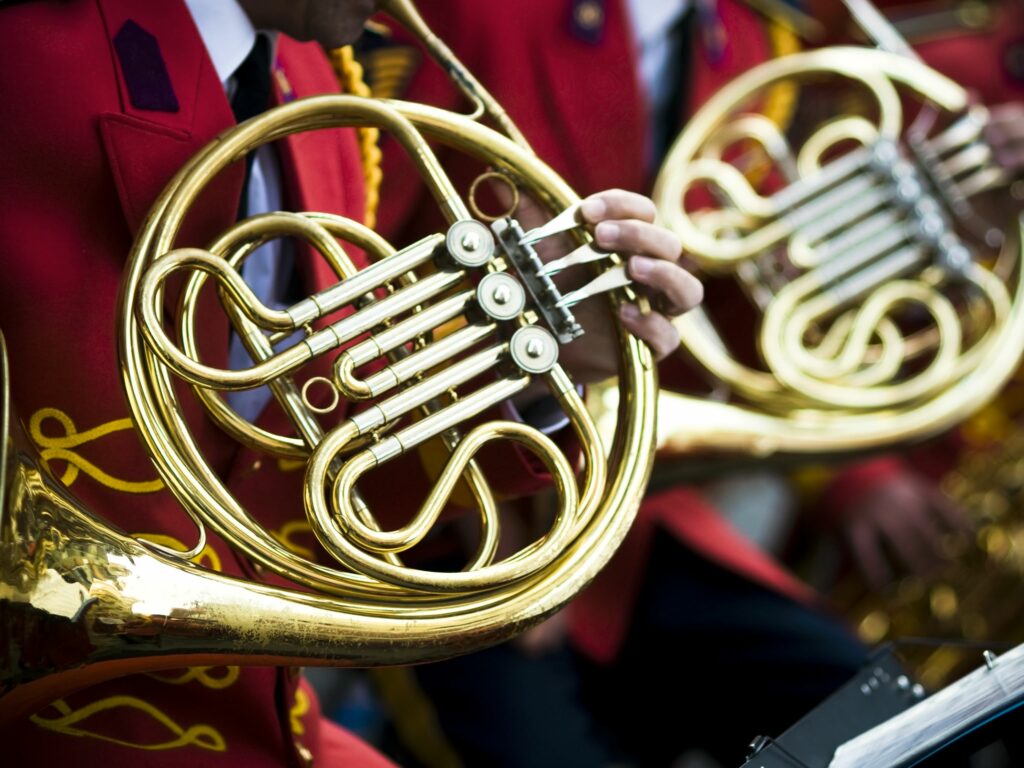- Top Trumpet Embouchure Techniques: Options for Beginners Through Professionals - October 12, 2022
- Is the Trumpet Hard to Learn? - September 30, 2022
- Best Leblanc Clarinet Models Guide: From Soprano to Contrabass - September 5, 2022
Do you want to join a historical brass band? What about play for fun on your own? Consider some of the best marching alto horns to decide which is the right choice for you. The alto horn may not be that common today, but it’s an exciting option for musicians of all backgrounds. Give it a try to learn if it’s the instrument of your dreams.
Do Marching High Horns Exist?
High marching horns aren’t as common as the bigger marching baritone, but they do exist. They were more common in the past, especially between the 1940s and 1970s. A marching alto horn looks similar to the modern alto horn, with three valves and an upward-pointing bell. However, older marching high horn bells pointed slightly to the front, while other high horns just point up.
Some collegiate marching bands, such as the University of Kansas, used alto horns into the 70s. The instrument was a great marching alternative to the concert French horn, which has a bell that faces away from the audience.
Marching High Horn vs Mellophone
A more recent marching horn that has since taken the place of the loud horn in E flat is the mellophone in F. In the marching bands I’ve joined or seen, mellophones are almost always there, and loud horns are almost never involved.
Because the mellophone is in F, it’s easier for many French horn players to make the switch between marching and concert bands. And you hold the mellophone like a trumpet, so it’s up higher rather than in front of your chest.
Odds are, you’re more likely to play the mellophone in a marching band. However, there are a few parts for the alto horn, and some historic bands, like Newberry’s Victorian Cornet Band, use it.
What to Look for in an Alto Horn
Whether you want to join a historic marching band or play the alto horn for fun, you should consider what goes into the best marching alto horns. These instruments all have some features that make them better than the competition.
Some of these factors are the same as other brass instruments. But there are some unique things that go into the alto horn. Here are a few things to look for when trying marching high horns.
Materials
One of the most important aspects of an alto horn is the materials that make it up. Softer materials, such as silver or silver plating, can make the instrument sound dark and warm. On the other hand, harder materials, like brass, offer a brighter, more responsive sound. The response makes the instrument a great choice for beginners since you don’t have to work as hard to get a sound.
You also need your high horn to use quality materials and a good manufacturing process. Finally, consider if the band you want to join requires players to use a brass or silver-plated model so that the group looks more uniform.
Valves
Next, consider the valve design and materials, and try to avoid plastic valves. Plastic valves don’t last as long as metal ones, such as nickel-plated valves. The last thing you want is to have to replace the valves or even the entire instrument. That can cost a lot of money, just getting good, sturdy valves now can help.
Valves should also move up and down smoothly to facilitate switching notes. If the valves get stuck, you can take the instrument to a repair technician, but they shouldn’t get stuck all of the time.
Pipe

Another factor that requires you to play the instrument is the pipe shape and design. Some players prefer for the pipes to have a gentler curve so that the air moves through the horn more easily. A sharper curve can make it harder to play since the air can’t move as fluidly. Longer pipes can also make the alto horn more difficult to play, but the length shouldn’t differ by that much.
However, if you get slightly shorter pipes, you won’t have to play against as much resistance. That can be good when you first learn to play the alto horn.
Bell
Loud horn bells can come in one or two pieces, and this can be a personal choice. A one-piece bell is easier to play, and you don’t have to worry about anything affecting the instrument’s vibrations. However, you can get a much darker sound when you use a two-piece bell. The different designs can also affect where the material is thicker or thinner.
On a two-piece bell, it’s thinnest at the bell tail, while the thinnest point on a one-piece bell is the bell rim. If possible, test out both options before deciding which you like better.
Bell Bracing
Bell bracing is another critical factor when choosing a marching high horn. When the bracing is in the wrong spot or not there at all, you may hear extra, unwanted vibrations. More bracing can offer a better sound without those vibrations distracting you or others. However, you may not want too much soldering, even though it can deepen the sound.
If the soldering isn’t done by an expert, it can make the instrument look and sound not as great. As with the bell, make sure to try out an alto horn to make sure you like it.
Bell Flares

You might think that the tall horn bell’s flare is standardized, but like other parts of the bell, it can differ. Some bells flare faster than others, so they sound warmer. When a bell flares more slowly, it offers a crisp sound, which can be great if you need to cut through a big ensemble. A larger flare can also help you when playing with other musicians.
However, a medium flare is better if you want to play in the high register. It can help you get a more focused sound to play those notes without as much trouble.
Durability
Like any marching brass, you need to select a loud horn that can withstand a lot. It needs to handle different weather conditions, from heat to cold to rain, even. You also need an instrument that won’t break when you set it down on the ground during a break. And you want to make sure it won’t break in case you accidentally drop it.
The slides should stay on and move but not slide off while you play. And you should be able to comfortably hold the loud horn to keep from dropping it.
Cost
Especially as a beginner, you may not want to spend thousands of dollars on an instrument. Fortunately, some of the best marching high horns are more affordable than you might expect. Still, you need to consider how much you want to spend on alto and what features you want. Think about the type of bell you want and the instrument’s material.
Then, you can set a realistic budget so you can get the instrument you need. But you don’t have to go into debt to buy the most expensive option on the market.
Best Marching Alto Horns
Add the best marching high horns are the same as those you might use in a concert band setting. You can follow the same steps to find the best marching high for you, and you can even use the same instrument in both groups.
Whether you’re a beginner, are switching from another brass instrument, or have played the alto, you need the best instrument you can get. Having a good instrument will make it easier to learn and improve, which can keep you motivated to play.
If you aren’t sure where to start, give these models a try. They may all not be for you, but you’ll learn what you do like so that you can find an instrument you love.
Jupiter JAH700
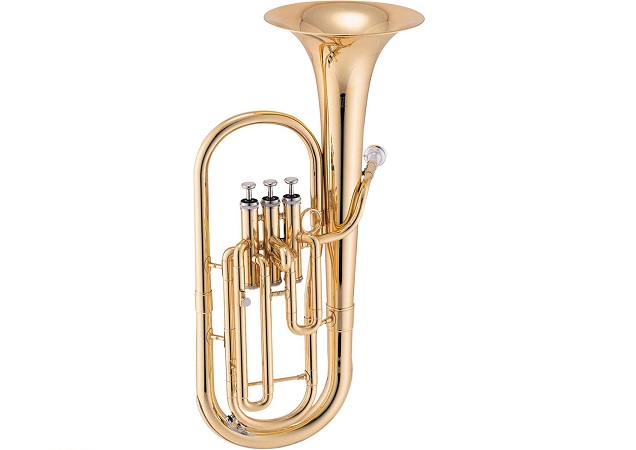
The Jupiter JAH700 is a brass alto horn with a brass lacquer, and it’s perfect for beginners. This model is durable enough to handle a lot of things, from not setting it down perfectly to playing outside. You’ll get a reliable instrument that can last for multiple years, and it looks and sounds fantastic. There are three valves, and this model even has a thumb-slide ring to help with tuning.
Its bell flares directly up, and it doesnt flare out too fast. That can make it a great instrument for the marching field as well as the concert stage.
Pros
- good design
- easy to play
- Affordable
Cons
- The lacquer looks good but isn’t standard brass or silver
Jupiter JAH700S
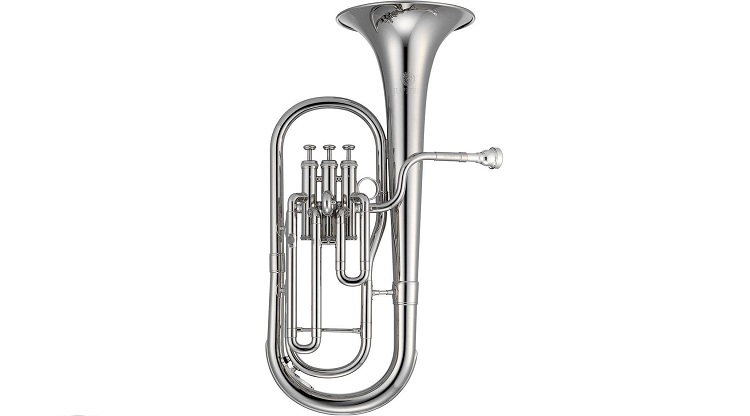
A very similar option to the previous model, the Jupiter JAH700S is worth considering. It features a brass body with silver plating, so it looks good with other silver instruments, and it sounds warmer than some brass. The three stainless steel piston valves are smooth and can move up and down quickly so that you can play faster notes. This model has a nice, brilliant sound, and it’s easy to play throughout the whole range.
It has the same thumb ring as the other Jupiter alto horn, so you can tune the instrument more easily. While it does cost slightly more for the silver plating, it’s still far from the most expensive model on the market.
Pros
- good sound
- easy to play
- smooth valves
Cons
- Not much different from the JAH700
Eastman EAH301
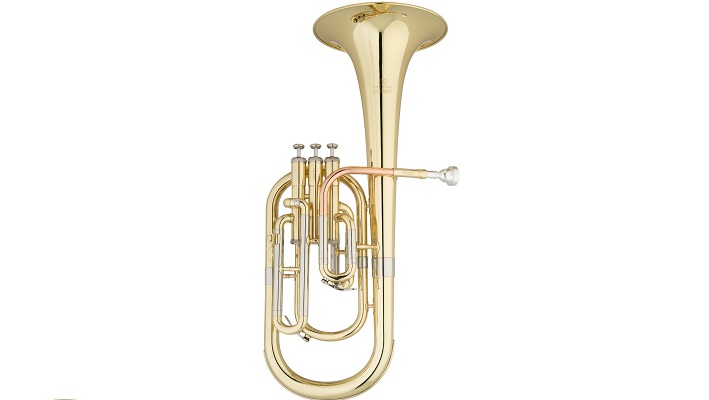
The Eastman EAH301 is great for players and band directors on a budget. It has a yellow brass body and bell, so it will fit in with the rest of the brass section. However, the rose brass leadpipe adds a bit of warmth thanks to the copper in that alloy. There are three piston valves, and it plays in the standard key of E flat.
You’ll get a mouthpiece and a protective case, so you have everything you need to play with. The slides are easy to adjust, and the tubing doesn’t make too many sharp turns, making playing less difficult.
Pros
- easy to play
- looks and sounds good
- Comes with a mouthpiece and case
Cons
- No thumb ring
Stagg WS-AH235

If you’re on a really tight budget and want to try the high horn for as little as possible, try the Stagg WS-AH235 model. It cost much less than even the Eastman alto horn, so it’s great for beginners who aren’t willing to commit to the instrument.
The body is brass with a nice, dark lacquer that looks and sounds excellent. There are three stainless steel piston valves, so they move easily to help you play faster passages.
You’ll get a mouthpiece and a protective case, so you can start playing the loud horn immediately. Plus, the pipe design makes it easy to get a good sound from the start.
Pros
- good for students
- Affordable
- nice design
Cons
- No thumb ring
Yamaha YAH-803S

One of the best marching alto horns for serious players is the Yamaha YAH-803S. The model is part of the Neo series, and the famous tenor (alto) horn player Sheona White helped design it. This design offers more projection and a powerful sound, and it has a deep and warm tone. It comes with three Monel piston valves that are easy to use, and the heavy-duty valve casing protects them.
The silver plating looks and sounds good, so it’s suitable for advancing alto horn players. Plus, you get a mouthpiece and case so that you can start playing right away.
Pros
- Looks and sounds great
- heavy duty
- versatile
Cons
- Not for beginners
Yamaha YAH-203
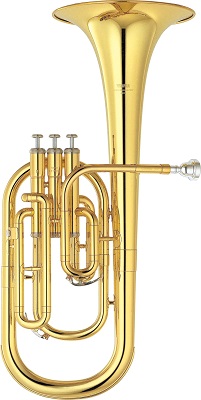
The Yamaha YAH-203 offers similar quality to the other Yamaha model but for a more affordable price. It has three nickel-alloy piston valves that are durable and resistant to corrosion.
There’s pressure-formed tubing that helps air move through the instrument smoothly. And the seamless bell eliminates excess vibrations, so you can sound even better. This model is particularly suitable for players with a bit of experience but who aren’t professionals. You get a good mouthpiece and case, so you can play it now and for years to come.
Pros
- versatile
- looks great
- Perfect for intermediate players
Cons
- No thumb ring
FAQs
Answer: In the past, a marching high horn was a distinct instrument, but that’s not so much the case today. You may find some older marching horns on the used market that have a bell that goes up and to the side.
However, almost all new alto horns have bells that face straight up, whether they’re for marching or not. But that means you can use the same instrument when marching and playing in a concert wind band.
Answer: If you want to play with groups, the mellophone is probably going to be the better option, especially for modern bands. However, the alto horn is more common in historic marching bands if that interests you.
And if you don’t care about playing with others, you should play the instrument you want. That may be the high horn, and you can play pretty much anything you want when you play by yourself.
Answer: Another instrument to compare to the alto horn is the baritone horn, which is more common in marching bands. The marching baritone horn has a bell that faces forward, and you play it like a bigger trumpet.
However, it is heavier and more expensive, so the high might be a better option. If you don’t want to deal with the extra weight of the baritone, the alto is a suitable alternative.
Answer: Some of the best marching high horns are expensive because they aren’t that common. Most manufacturers probably aren’t producing them in bulk, which might lower the price per instrument.
They’re also a bit expensive because they require more materials than trumpets, for example. The extra materials add to the cost of the high, and the company passes that to you, the buyer.
Answer: The high horn’s range in concert pitch is the A just over an octave below middle C (A2) to the E flat at the top of the treble clef staff (E flat 5). Since the high horn plays in E flat, written notes are a major sixth higher than that.
So the written range is from the F sharp below the middle C (F sharp 3) to the C just above the treble clef (C6). Alto horn music is in the treble clef since the range overlaps so well with it.
Final Note on the Best Marching Alto Horns
Each tall horn player will likely have a different opinion on what the best marching tall horns are. However, Yamaha and Jupiter make some of the best ones on the market. If you’re a beginner, try the two Jupiter models, and give the Yamahas a shot if you’ve played the alto before. But don’t be afraid to try other models so you can get one that works with you and your playing style.


